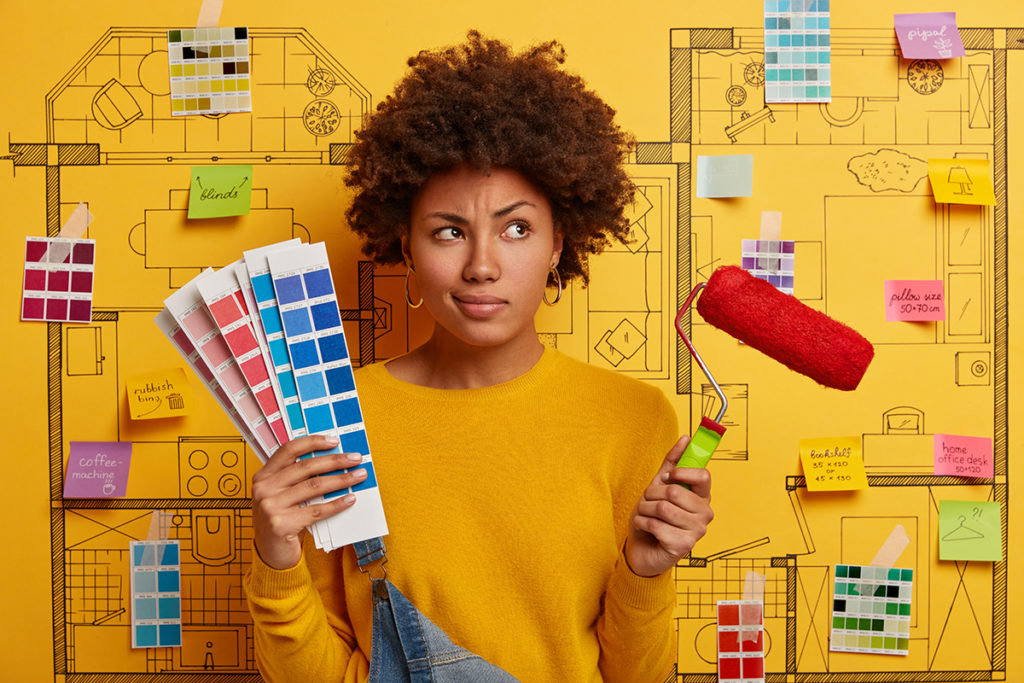After a year of coronavirus restrictions and new routines, Americans are looking at their homes with fresh eyes. Research from Lowe’s in December 2020 found that six in ten agreed that ‘home means more to me than it did a year ago’, and ‘I have bigger plans for my home than I did a year ago’.
Their enthusiasm has translated into strong growth for the home improvement sector and reflects the overall shift to online. Lowe’s reported higher than expected sales for the fourth quarter with online sales up by 121%. Similarly, Home Depot’s sales for the same period were up 25%, and digital sales grew 86% for the full year. And Wayfair’s 2020 revenues were up 55.0%, with the number of active customers reaching 31.2 million by the end of the year, an increase of 53.7% over 2019. Furniture and home furnishing sales now account for 12.3% of all retail ecommerce spend in the US.
Shopping for home décor doesn’t have to be expensive. Mainstream fashion names such as H&M, Urban Outfitters and Primark all offer affordable homeware ranges.
For those looking for home decor inspiration, then there’s plenty online. As well as Instagram and Pinterest, sites like www.thespruce.com and www.houzz.com are packed with look books, mood boards and style advice. Home improvement retailers have always provided help and advice for their customers and their websites are packed with ‘how to’ videos, instructions and practical advice for experts and novices alike.
Real-time social proof messaging is a good fit with this friendly, professional vibe, helping shoppers see what’s popular (’45 of these sold today), what’s in stock (’27 of these in stock’), what other customers say (‘89% of buyers gave this 5* for comfort’). This objective contextual real-time information and personal interaction help people buy with confidence.
We certainly decorate more frequently these days. Home improvement doesn’t always mean redecorating the whole room. Sometimes, new pillows, a throw and a pot plant will be enough.
For 2021, there’s a definite trend for more flexible spaces that can better accommodate working from home, exercise, home schooling, crafting, entertainment, socialising inside and out, as well as enabling us to carry on with all the usual domestic chores pleasures. Open plan may have had its day. Etsy reports a 134% increase in searches for room dividers and a 159% increase in searches for murphy beds. It turns out we’d like a bit more privacy, please.
And then there’s the ‘cloffice’. Converting a closet into an office is one way to carve out a separate workspace in what is a pretty crowded living environment right now. You can check it out on Instagram or Pinterest.
But when you transform your spare closet into a cloffice, where are you going to put the stuff you had stored in there? The USA has a storage problem. There are 300,000 things in the average American household. It’s a bit of an epidemic. Clutter can be a source of stress: 50% say they feel overwhelmed by the amount of stuff in their homes. Sorting out storage is a priority for many this Spring.
There’s also a trend for more smarter homes. According to realtor.com a quarter of Americans are more interested in smart home technology now that they’re spending more time at home. They’re especially interested in technology that improves the safety and security of their home, and measures that boost energy efficiency.
Online shopping for the home is here to stay. It’s important for retailers that those customers make the right choices for their homes and families. Social proof is a powerful and low risk way to support them on their shopping journey.



